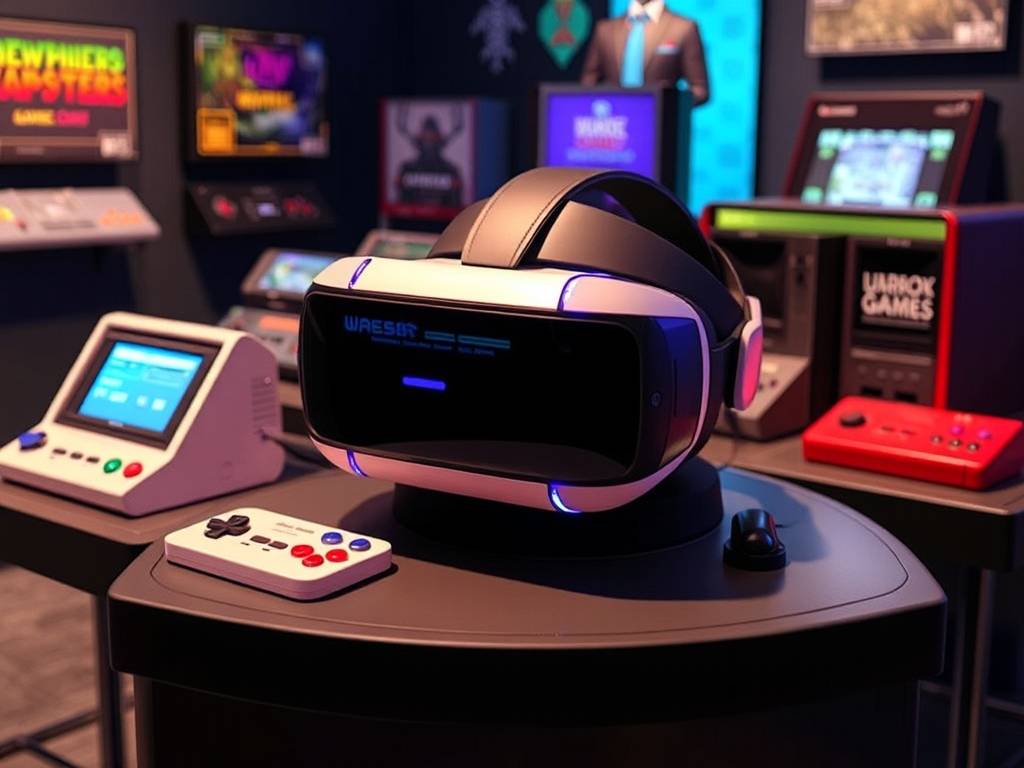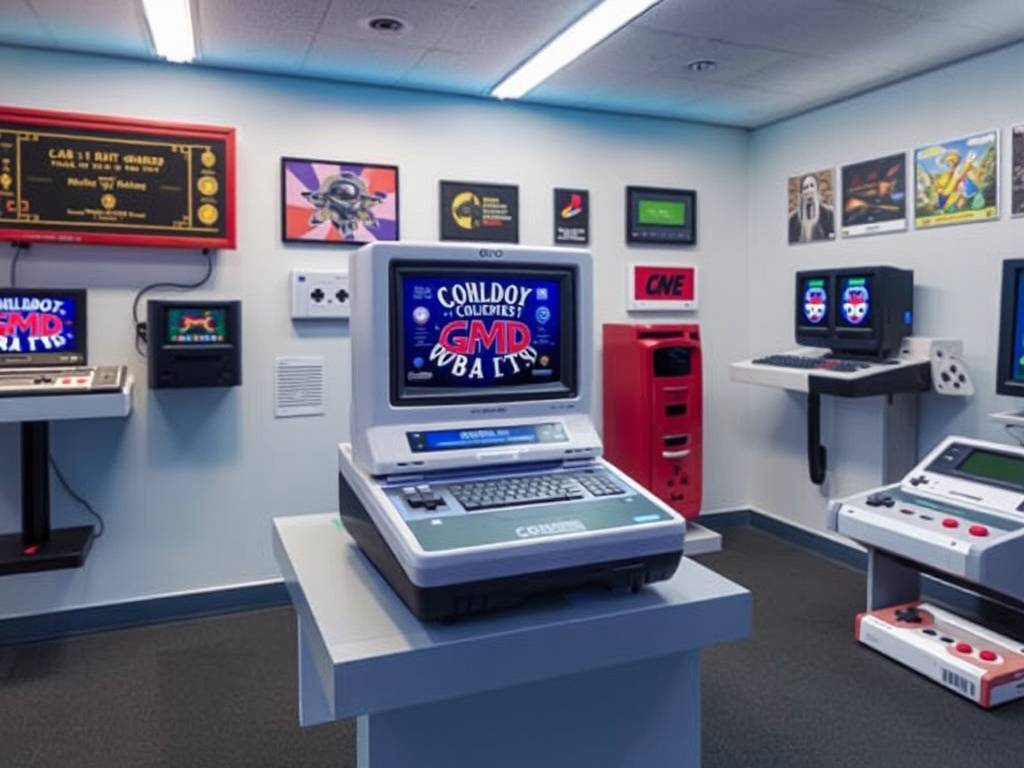The Pixelated Time Machine: How VR is Rescuing and Reimagining Our 8-Bit Console Heritage
Close your eyes for a moment. Can you hear it? The distinct, low-fi buzz of a CRT television warming up. The satisfying thunk-clunk of a cartridge being inserted into a console. The iconic, 8-bit melody that marks the start of an adventure. For generations who grew up with the Atari 2600, the Nintendo Entertainment System (NES), the Sega Master System, and the Commodore 64, these are more than just memories; they are sensory landmarks of our youth.
Yet, time is relentless. The original hardware is aging, capacitors are failing, and the once-ubiquitous CRT televisions that gave these pixels their characteristic warmth are disappearing into landfills. We face a genuine cultural preservation crisis. How do we safeguard the tactile, experiential history of video games? The answer, surprisingly, lies in the very technology that seems its polar opposite: Virtual Reality. Welcome to the next frontier of digital archaeology—the Game Console Museum VR, and its latest, groundbreaking expansion: the 8-Bit Systems Update.

This isn't just about playing old games on a new screen. This is about a complete environmental and emotional resurrection. The Game Console Museum VR is a meticulously crafted virtual space, a digital sanctuary designed not only to preserve these classic systems but to contextualize them, allowing a new generation to experience them as they were meant to be. The recent 8-Bit Systems Update is a love letter to the dawn of the home console era, a deep dive that solves the multifaceted problem of how we interact with, understand, and preserve our digital past.
Stepping Into the Living Room of Yesterday
When you first load into the museum's 8-Bit wing, you don't simply see a list of games. You are transported. You find yourself standing in a perfectly rendered 1980s living room. Shag carpet is under your virtual feet, wood paneling adorns the walls, and a bulky, curved-glass CRT television sits on a stand. This is the first masterstroke of the immersive retro gaming experience. The team behind this project understands that the magic wasn't just in the console itself, but in the entire ritual. The museum allows you to physically walk over to a shelf, pick up an Atari 2600 joystick (with its iconic single, red button), and push the power switch on the wooden-veneer console. You hear the satisfying mechanical click.
This level of interactive digital preservation addresses a key problem: the loss of context. Emulators on a modern PC are sterile. Here, you experience the slight RF interference pattern on the screen before the game solidifies, the warm glow of the tube, and the specific way the light hits the room. For older visitors, it’s a powerful wave of nostalgia. For younger ones, it’s a fascinating historical lesson. This is what sets it apart from a simple virtual reality emulation; it's a full-sensory historical simulation.
Beyond the Screen: The Art of the Artifact
A traditional museum places artifacts behind glass. The Game Console Museum VR puts them in your hands. The 8-Bit Systems Update features a "Examination Mode" where you can pull any console, cartridge, or accessory from a virtual display and inspect it in full 360 degrees. You can marvel at the intricate, often beautiful artwork on an NES cartridge like "Megaman 2," feeling a sense of scale and detail impossible to see in pictures. You can read the tiny text on the back, feel the weight of the plastic, and even blow into the cartridge slot—a nod to the infamous "Nintendo blow" that was a ritual for millions, complete with a visual puff of air from your virtual avatar.
This feature is crucial for preserving classic video game history. It’s not just about the code; it’s about the industrial design, the packaging, the physical manuals that told stories and fired our imaginations. How many children today have held a Sega Master System "Card Catcher" or seen the unique design of a ColecoVision controller? This interactive digital preservation effort ensures that the physicality of these objects is not forgotten, creating a comprehensive archive that goes far beyond ROM files.
The Games Library: A Curated Journey
The heart of the experience is, of course, the games. The 8-Bit Systems Update boasts a legally licensed library of hundreds of titles, presented not as a flat grid, but as a collection you browse on virtual shelves. The selection is curated, offering a "greatest hits" tour of the era. You can experience the groundbreaking simplicity of Pong, the frantic action of Space Invaders on the Atari 2600, the world-building wonder of The Legend of Zelda on the NES, and the slick, colorful platforming of Alex Kidd in Miracle World on the Master System.
The emulation is flawless, but it's the social and educational features that truly solve user problems. You can play cooperatively or competitively with friends in the same virtual room, passing a second controller—a perfect replica of the NES "dog bone" or the Atari paddle. This tackles the modern issue of isolation in gaming, bringing back the communal "couch co-op" experience. Furthermore, "History Nodes" are scattered throughout the virtual space. Clicking on one might bring up a video interview with a developer, a gallery of concept art, or text explaining the cultural impact of a specific game. This transforms the experience from mere play to educational VR gaming, making it an invaluable tool for understanding the evolution of 8-bit gaming.
A Solution for Modern Accessibility and Preservation
Let's address the practical problems head-on. Original hardware is fragile, expensive to collect, and difficult to connect to modern displays. The Game Console Museum VR eliminates these barriers to accessible retro gaming. There’s no need to hunt for working consoles on eBay, source rare SCART cables, or worry about the long-term preservation of aging console hardware. Everything is maintained, updated, and presented in one accessible, future-proofed package.
Moreover, it solves the problem of space. A physical collection of every 8-bit console, game, and accessory would require a dedicated room. This virtual museum exists in a headset, making it the ultimate virtual reality emulation space for enthusiasts and novices alike. It ensures that the cultural impact of early video games is not lost to physical decay and obsolescence.
The Future of the Past
The 8-Bit Systems Update for the Game Console Museum VR is more than a software patch; it's a paradigm shift. It proves that preservation isn't just about archiving bits and bytes, but about recreating the soul of an experience. It’s a bridge between generations, a powerful educational tool, and the most comprehensive solution yet to the looming threat of digital obsolescence.

It allows us to be time travelers. We can step back into that sun-dappled living room of a Saturday morning in 1987, grab a controller, and lose ourselves in a world of pixels and possibility. It reminds us that while the graphics were simple, the joy, the challenge, and the sense of wonder they inspired were, and always will be, timeless. The Game Console Museum VR isn't just preserving history; it's keeping it alive, one virtual cartridge at a time.


















